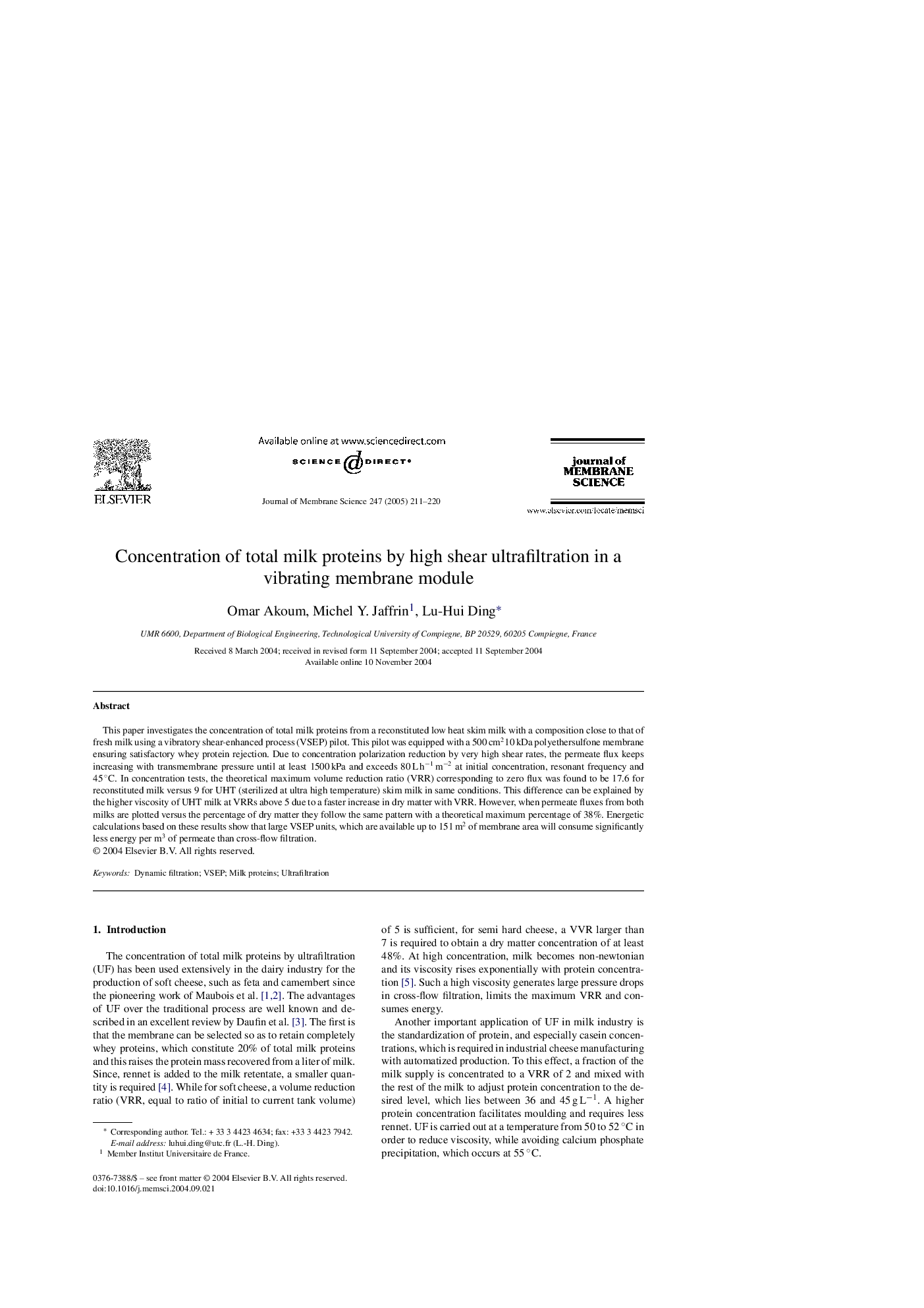| Article ID | Journal | Published Year | Pages | File Type |
|---|---|---|---|---|
| 9685121 | Journal of Membrane Science | 2005 | 10 Pages |
Abstract
This paper investigates the concentration of total milk proteins from a reconstituted low heat skim milk with a composition close to that of fresh milk using a vibratory shear-enhanced process (VSEP) pilot. This pilot was equipped with a 500 cm210 kDa polyethersulfone membrane ensuring satisfactory whey protein rejection. Due to concentration polarization reduction by very high shear rates, the permeate flux keeps increasing with transmembrane pressure until at least 1500 kPa and exceeds 80 L hâ1 mâ2 at initial concentration, resonant frequency and 45 °C. In concentration tests, the theoretical maximum volume reduction ratio (VRR) corresponding to zero flux was found to be 17.6 for reconstituted milk versus 9 for UHT (sterilized at ultra high temperature) skim milk in same conditions. This difference can be explained by the higher viscosity of UHT milk at VRRs above 5 due to a faster increase in dry matter with VRR. However, when permeate fluxes from both milks are plotted versus the percentage of dry matter they follow the same pattern with a theoretical maximum percentage of 38%. Energetic calculations based on these results show that large VSEP units, which are available up to 151 m2 of membrane area will consume significantly less energy per m3 of permeate than cross-flow filtration.
Related Topics
Physical Sciences and Engineering
Chemical Engineering
Filtration and Separation
Authors
Omar Akoum, Michel Y. Jaffrin, Lu-Hui Ding,
